Transportation in Paris: Insider's Guide to Navigating the City of Light
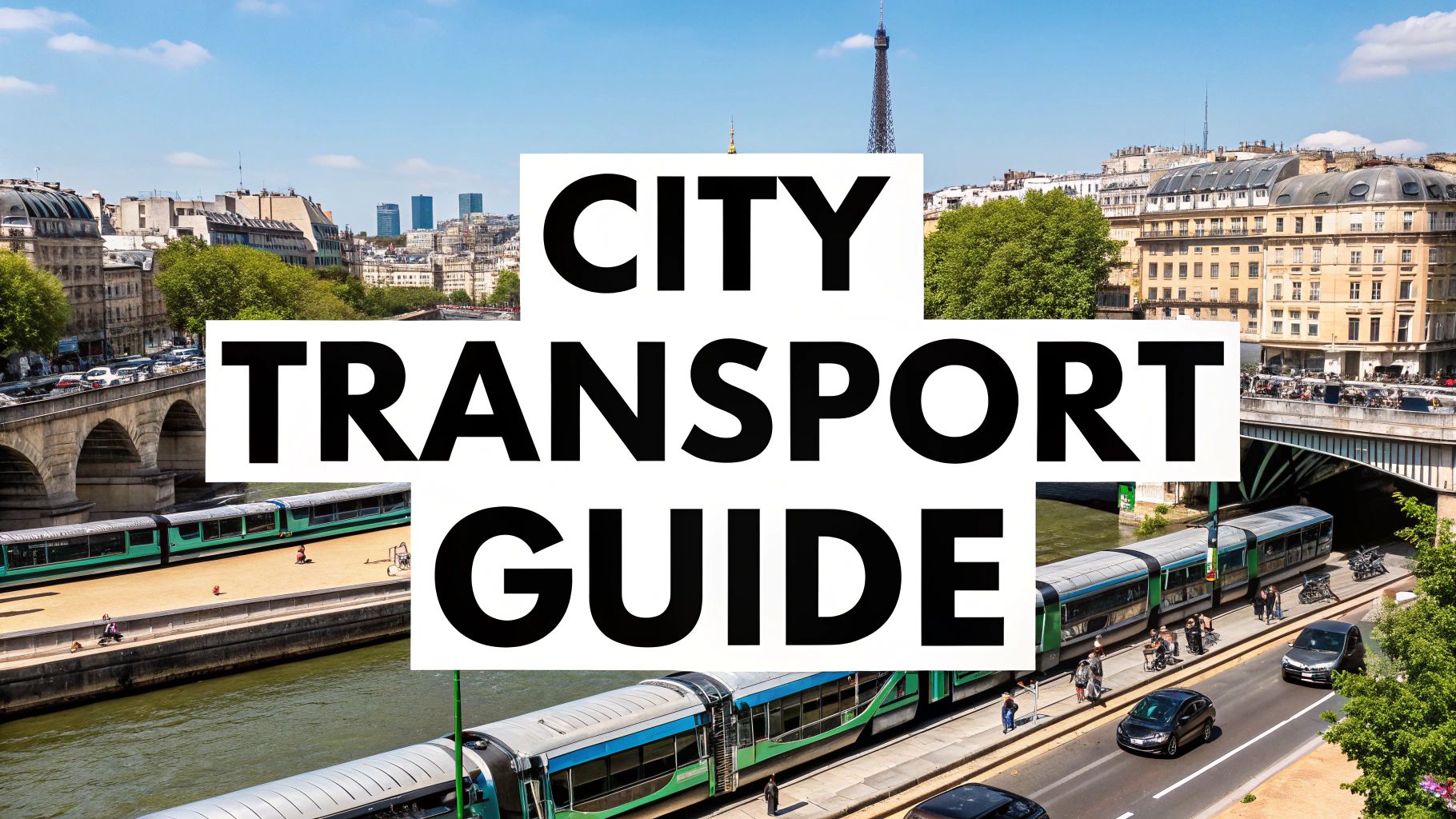
Understanding Paris Transportation Essentials
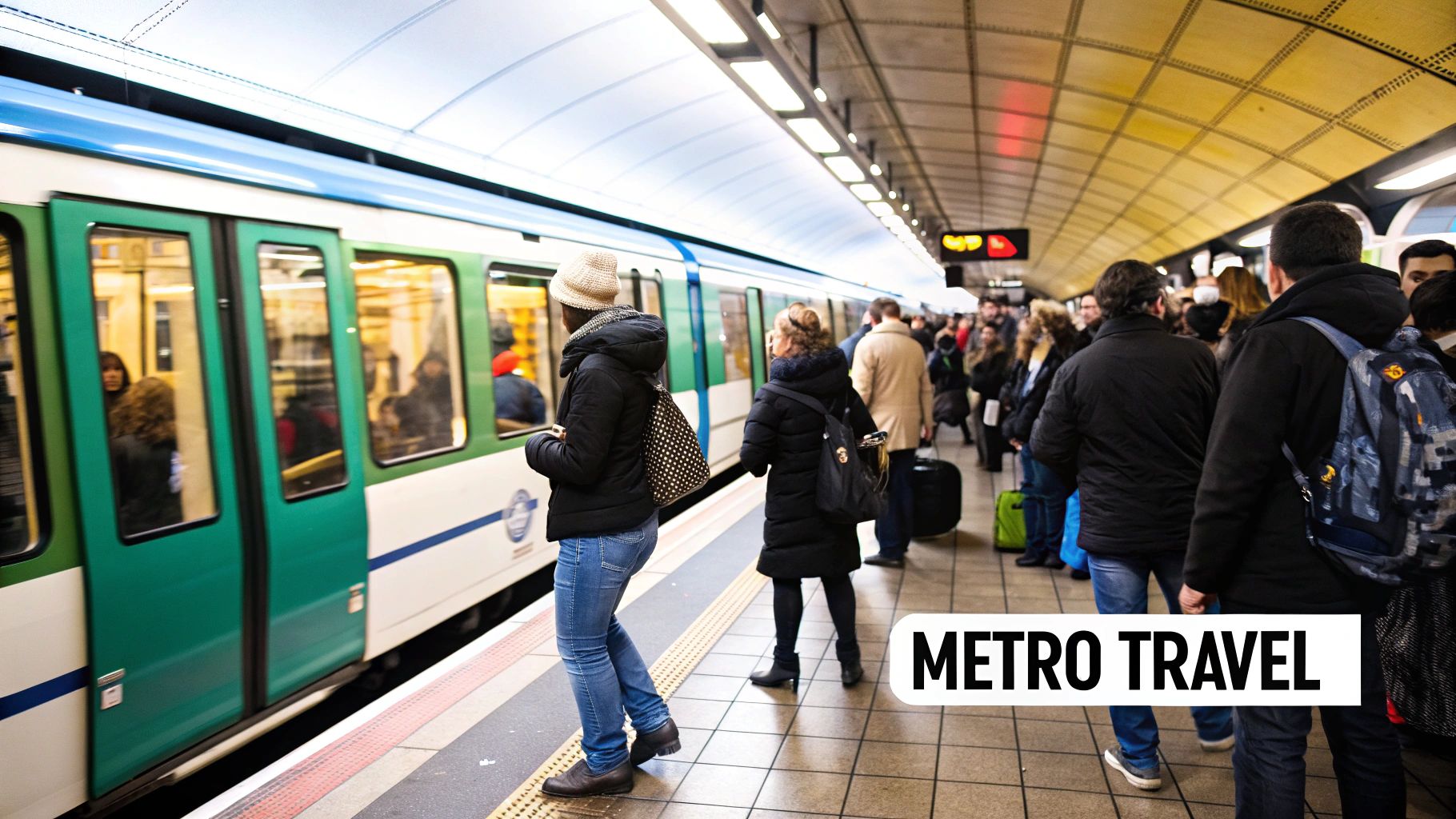
Geting arround Paris requires understanding its well-designd transporttion netwok. Beyond just knowing what optons exist, it's essental to learn which modes of transport work best for diferent situtions and areas of the city. Let's explor how to navgate Paris like a local, from its historic railways to modern transit optons.
A Historical Perspective on Paris Transportation
Paris's transportation history reveals how the city has grown and changed over time. The Chemin de fer de Ceinture railway line shows this evolution perfectly. This circular railway began as a freight line but opened to passengers in 1862 after public demand. By 1869, it had grown to include 25 stations encircling Paris and carried over 40 million passengers in 1900. When the Paris Metro opened that same year, it marked a new era in city transit. The Metro's success eventually led to the Ceinture line closing in 1934, showing how Paris has always adapted its transit systems to meet changing needs.
The Modern Transportation Landscape
Paris now offers many ways to get around, letting travelers pick what works best for their needs. The system includes the extensive Metro network, city buses, suburban RER trains, and trams. These options work together to serve millions - in 2020, the RER trains alone carried over 759 million passengers. Each mode of transport serves a specific purpose in helping people move through the city efficiently.
Navigating the Zones and Options
Like many major cities, Paris uses a zone system for public transit fares. The zones form rings around the city center, with prices increasing as you travel outward. Understanding these zones helps you buy the right tickets and avoid extra costs. Each type of transport also has its strengths - the Metro provides quick underground travel, buses offer scenic above-ground routes, and the RER connects to suburbs throughout the Île-de-France region.
Practical Tips for Seamless Travel
To really experience Paris, try combining different types of transport. Take the Metro for speed, then switch to a bus to see the sights. This flexible approach lets you both save time and enjoy the city views. Learn more in our article about Paris travel tips. Good transportation in Paris isn't just about reaching destinations - it's about enjoying each journey. By knowing the history, using modern options wisely, and planning smart routes, you can make every trip in Paris more enjoyable.
Mastering the Paris Metro Like a Local
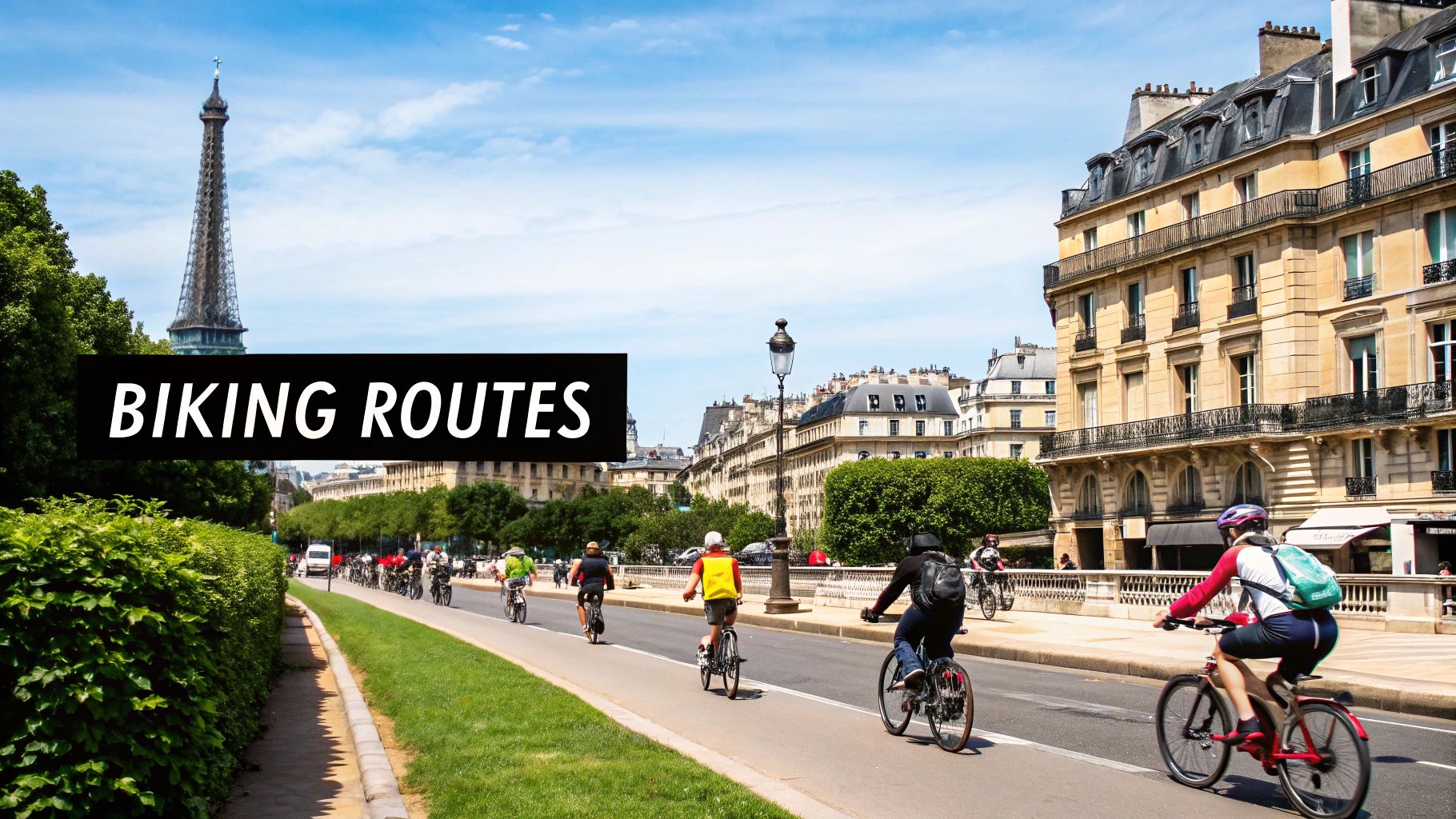
Getting around Paris means mastering its Metro system. While the extensive network of lines and stations might seem daunting at first glance, a few key insights will help you navigate like a local Parisian in no time.
Decoding the Metro Map
The Paris Metro map is actually quite logical once you understand its organization. Each line has a unique number and color, making it simple to plan your route visually. Transfer stations are clearly marked, showing where you can switch between lines. For instance, to get from the Louvre to the Eiffel Tower, you'd take Line 1 (yellow) to Concorde station, then switch to Line 8 (pink). Breaking down your journey this way makes navigation straightforward and manageable.
Navigating Rush Hour Like a Pro
Peak hours on the Metro run from 8:00-9:30 AM and 5:30-7:00 PM, when trains get very crowded. Local riders have figured out smart ways to handle these busy times. They know which spots on the platform lead to less packed train cars, and often avoid major transfer stations during rush hour by using alternative routes. These simple strategies can save precious minutes on your daily commute.
Seamless Transfers and Time-Saving Tricks
Moving between Metro lines is made easier by following the clear directional signs within stations. These signs guide you to connecting lines using line numbers and final destinations. Many stations also feature underground walkways linking different lines, so you can transfer without going back up to street level. This network of passages helps you move efficiently through the system while staying sheltered from the weather above.
Utilizing Technology to Your Advantage
Modern apps like Citymapper and the RATP official app have made Metro navigation even simpler. These tools provide live updates on train timing, service changes, and platform information. They can plot the fastest route between any two points and even show how busy different trains are likely to be. By combining these digital helpers with an understanding of the Metro's layout and local know-how, you'll be traveling through Paris with confidence and ease.
Beyond Metro: Strategic Use of Buses and Trains
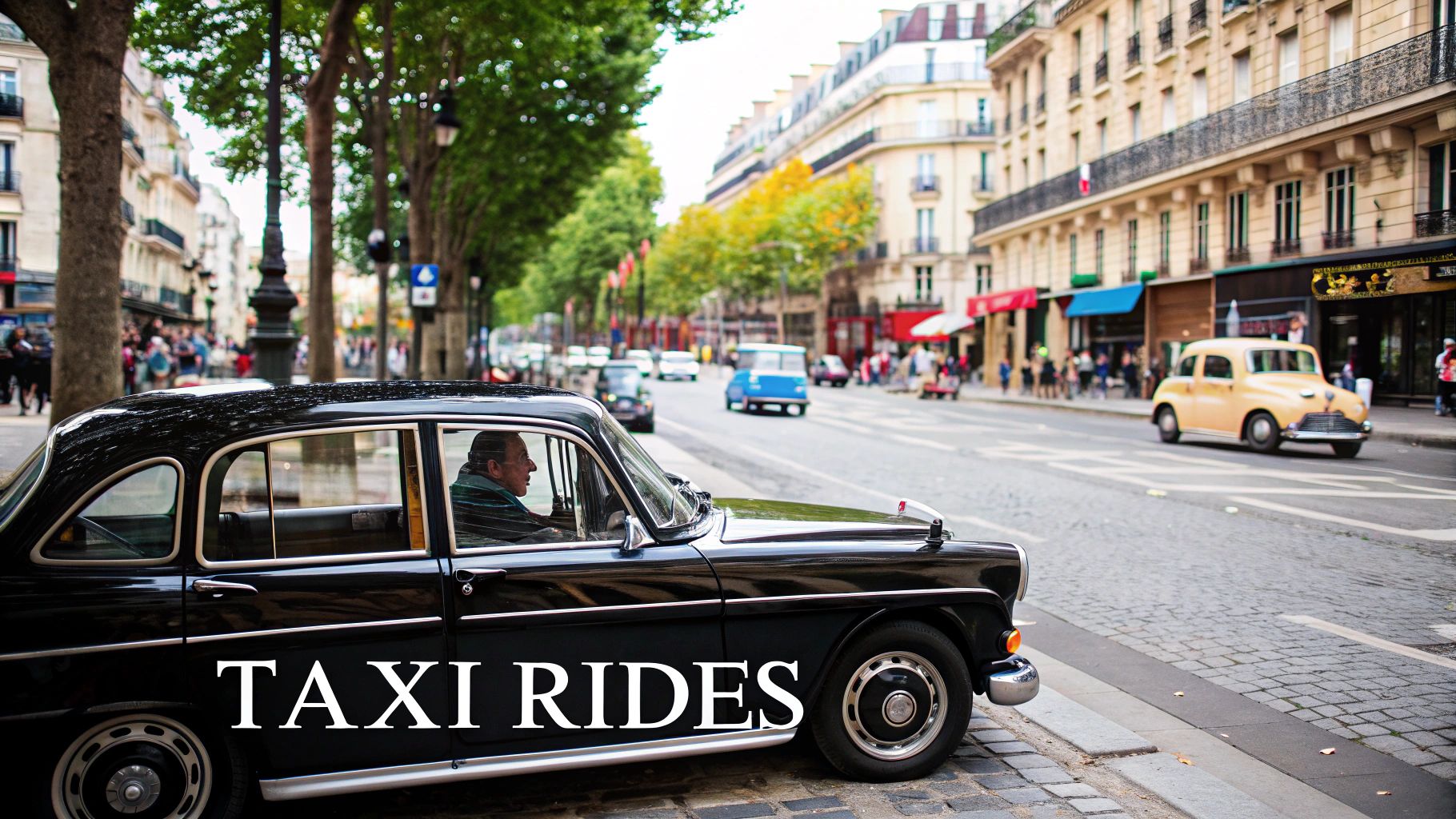
The Paris Metro is essential for getting around the city, but limiting yourself to just the underground system means missing out on many ways to experience Paris. By incorporating buses and trains into your travel plans, you can discover new perspectives and often find faster routes between destinations. Let's explore how to make the most of Paris's complete public transit network.
Unveiling the Bus Network
Many visitors overlook Paris's extensive bus system, but it offers some of the best ways to see the city while getting from place to place. From your seat on a bus, you can admire the architecture, watch street life unfold, and spot hidden gems you might have missed underground. For instance, bus routes that cross the Seine provide stunning views of the river and its historic bridges. Buses also reach neighborhoods and attractions that aren't directly on metro lines, making them perfect for exploring beyond the usual tourist areas.
RER: Reaching Beyond the City Center
The Réseau Express Régional (RER) train network extends your reach far into the Paris suburbs and seamlessly connects with the metro system. These efficient trains are essential for day trips to major attractions outside central Paris. For example, the RER is the best way to visit the Palace of Versailles or spend a day at Disneyland Paris. The system's integration with the metro gives you flexibility to explore the entire Île-de-France region. You might be interested in: 72 Hours in Paris and the Cote Fleurie Flowery Coast.
Tramway: A Modern and Scenic Choice
Paris's modern tram system adds another excellent option for getting around, especially in outer districts. The quiet, smooth-running trams offer comfortable rides with great views along their routes. These lines often run through less crowded areas, making them a pleasant alternative to packed metros and buses during busy times. The tram network particularly shines when connecting neighborhoods along the city's periphery.
Combining Transit Modes for Optimal Efficiency
The real advantage of Paris public transit comes from using different types of transportation together. Each mode - metro, bus, RER, and tram - serves specific purposes that complement each other perfectly. Think of planning your route like solving a puzzle: sometimes the fastest path combines a quick metro ride with a scenic bus journey, or an RER trip followed by a convenient tram connection.
| Transportation Mode | Strengths | Best For |
|---|---|---|
| Metro | Speed, extensive coverage | City center travel, quick transfers |
| Bus | Scenic routes, access to areas not served by metro | Sightseeing, reaching outer districts |
| RER | Fast connections to suburbs, integration with metro | Day trips, travel within Île-de-France |
| Tram | Smooth ride, less crowded | Outer district travel, scenic routes |
By understanding how each part of the system works best, you can create travel plans that match your needs - whether you're looking for the fastest route or want to enjoy the journey itself. This knowledge lets you experience Paris more fully while making the most of your time in the city.
Embracing Eco-Friendly Transit Options
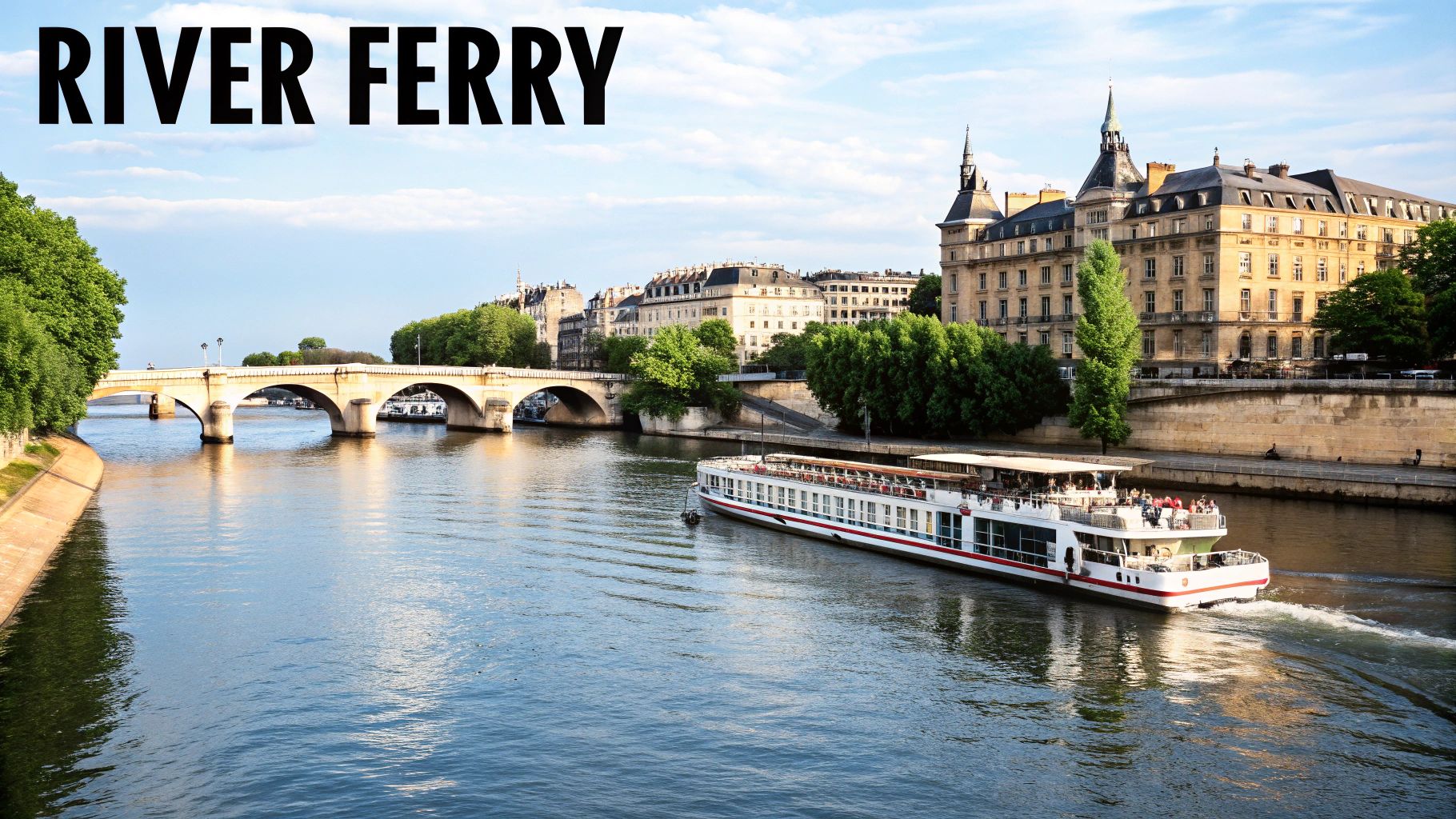
Paris has developed an impressive array of sustainable transportation choices that complement its traditional metro and bus networks. The city's focus on environmentally conscious transit options shows its dedication to cleaner air and reduced emissions. These green transportation methods give both visitors and locals engaging ways to experience Paris while minimizing their environmental impact.
Pedal Power: Exploring Paris by Bike
Cycling has become increasingly practical in Paris thanks to major improvements in bike infrastructure. The Vélib' bike-sharing system makes it easy to hop on a bicycle, with docking stations placed throughout the city for convenient access. For example, many riders enjoy taking a relaxed ride along the Canal Saint-Martin, experiencing a different side of Paris away from underground travel. The growing network of protected bike lanes and calmer side streets helps cyclists feel safer and encourages more people to choose bicycles for getting around.
Shared Mobility: Car Sharing and Scooter Options
Car sharing services provide a smart alternative to owning a vehicle, helping reduce traffic and pollution. These programs let users rent cars by the hour when needed, avoiding the hassles of full-time car ownership. Electric car sharing is growing more common as Paris emphasizes clean transportation. Electric scooters have also become popular for quick trips across the city. This mix of shared vehicle options gives people flexibility in how they travel.
Pedestrian-Friendly Paris: Walking the City of Lights
Walking remains one of the most rewarding ways to soak in Paris's character. The city has made walking more pleasant by widening sidewalks, creating car-free zones, and adding safer crossings. This focus on pedestrian comfort makes it natural to explore neighborhoods at a leisurely pace. Walking through the Marais district, for instance, lets you discover hidden courtyards and charming cafes you might miss using other transportation. These pedestrian improvements have made Paris more inviting for those on foot.
A Greener Future for Transportation in Paris
Paris shows its commitment to sustainable transit through continued investment in eco-friendly infrastructure and creative transportation programs. These efforts are making the city's transportation network more efficient and enjoyable for everyone. By choosing green transit options, visitors can support Paris's environmental goals while experiencing the city in fresh ways. Whether cycling along the Seine or strolling through historic neighborhoods, sustainable transportation offers an authentic way to discover Paris's magic.
Future Transport for the City of Paris
Paris, a city known for its exceptional transport system, continues to push boundaries in urban mobility. Recent plans and infrastructure projects show how the city aims to create a more connected, eco-friendly, and efficient transportation network for everyone who lives in or visits Paris.
The Grand Paris Express: A Major Transportation Milestone
The Grand Paris Express stands as one of the most ambitious transport projects in Europe. This major expansion will add over 200 kilometers of automated metro lines to the region, including four entirely new lines while extending several current ones. For communities that previously faced long commute times on RER lines, this project will provide faster, direct access into central Paris and key destinations across Île-de-France. The improved connections will make daily travel much simpler for millions of people.
Benefits for Local Life and Tourism
These new transport links will bring positive changes for both residents and visitors. People living in outer suburbs will spend less time commuting and gain better access to jobs and cultural activities in Paris. The improved connections are also expected to boost business growth in suburban areas. For tourists, exploring attractions beyond central Paris becomes much easier - imagine quick, simple trips to Charles de Gaulle Airport or Disneyland Paris without complex route planning. By making public transport more appealing, the project also helps create a more sustainable city with fewer cars on the roads.
Building a Smarter Transport Network
Paris is also making its transport system more intelligent through various city initiatives. This includes creating advanced traffic control systems, supporting electric vehicle adoption, and growing the popular bike-sharing network. For example, the shift to electric buses and installation of charging points across the city will help reduce both emissions and noise. These improvements show how Paris plans to make getting around the city cleaner and more convenient.
Tips for Future Travel Planning
To make the most of these transport improvements, it's important to stay informed. Check the Grand Paris Express website for project updates and use apps like Citymapper and RATP for real-time travel information and route planning. Understanding these changes will help you navigate Paris more effectively and enjoy everything the city has to offer, from its historic center to its evolving suburbs. With some advance planning, you can experience an efficient and enjoyable journey through the City of Light.
Smart Strategies for Transit Success
Getting around Paris efficiently takes more than just reading a metro map. Success comes from understanding the full transportation network and making smart choices that save time and reduce hassle. With the right approach, navigating Paris's transit system becomes an enjoyable part of experiencing the city.
Choosing the Right Travel Pass
Selecting the best transit pass is your first step toward easy Paris travel. For short stays, buying individual tickets or discounted 10-ticket carnets may be enough. However, if you're staying longer or plan to use transit frequently, consider a Navigo Découverte pass (weekly or monthly). This pass gives unlimited access to metros, buses, RERs and trams across Paris and surrounding areas. You'll save money and avoid the need to buy tickets repeatedly, giving you more freedom to explore.
Mastering Luggage Logistics
While Paris has excellent public transit, traveling with luggage requires planning. Metro stations often have stairs and get crowded, making large suitcases difficult to manage. Buses can be a better choice for shorter trips since they offer more space and easier access. When arriving from the airport with heavy bags, consider taking the Roissybus or RER B train into the city center instead of the metro for a smoother journey.
Handling Unexpected Situations
Even with careful planning, you may encounter delays, strikes, or service changes. Having backup options ready helps you adapt quickly. For example, if a metro line closes unexpectedly, knowing alternate bus routes or having ride-share apps ready can save your day. Learning basic French phrases like "Où est la station de métro?" (Where is the metro station?) and "Quel est le prochain arrêt?" (What is the next stop?) helps you get assistance when needed. Being prepared turns potential problems into minor detours. Read also: What to See in Paris in 2 Days for making the most of your time despite disruptions.
Navigating Peak Travel Times and Late-Night Options
Rush hours (8:00-9:30 AM and 5:30-7:00 PM) bring packed trains and buses. When possible, adjust your schedule to avoid these busy periods. If you must travel during peak times, look for less crowded station entrances or bus stops. For late-night travel, the Noctilien night bus network keeps running after the metro closes. This service connects major points throughout Paris and nearby suburbs all night long, letting you safely enjoy Paris's nightlife without worry.
Insider Tips for a Smooth Journey
Travel light: Pack efficiently to avoid luggage struggles on transit.
Utilize technology: Apps like Citymapper and RATP offer real-time updates and route planning.
Stay informed: Check service status before heading out.
Be mindful of peak hours: Travel outside rush hour when possible or have backup routes ready.
Learn basic French phrases: Simple language skills help tremendously when asking for directions.
Smart transit strategies help you move through Paris with confidence. By following these approaches, you'll spend less time figuring out transportation and more time enjoying the city's treasures.
Ready to experience Paris like a local? Find perfect accommodations in the heart of the city. Book your stay with BHP today!